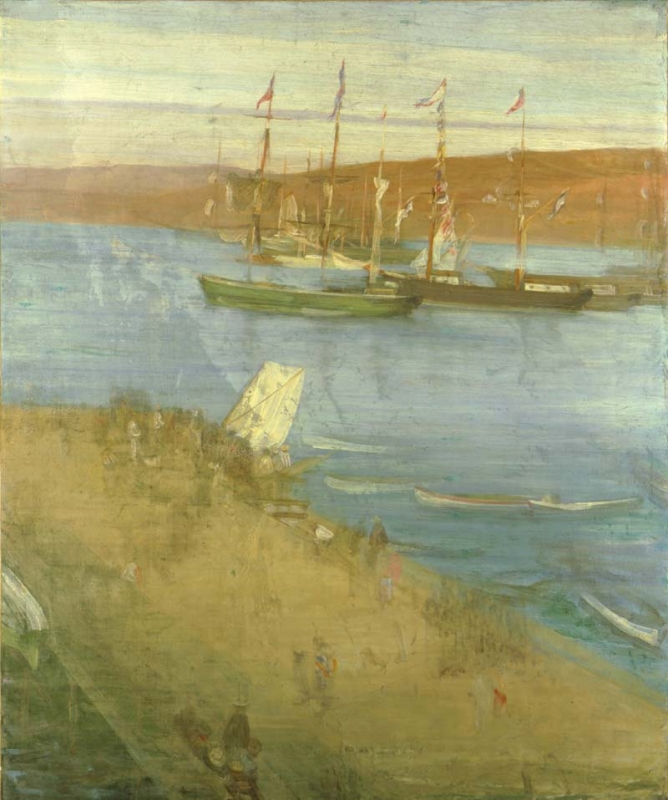The Morning after the Revolution, Valparaiso dates from 1866, or at least was started in 1866.
Whistler spent six months in Chile in 1866 at the time of a brief confrontation between Chile and Spain. 1 According to Whistler's diary for the trip to South America, he left Southampton on 2 February 1866 and arrived in Valparaiso on 12 March, where he remained, except for occasional visits to Santiago and the surrounding countryside, until sailing for England early in September 1866. 2
Whistler's account of this trip and bombardment, as told to his biographers, the Pennells, is as follows:
'It was a moment when many of the adventurers the war had made of many Southerners, were knocking about London, hunting for something to do, and, I hardly knew how, but the something resolved itself into an expedition to go and help the Chilians and, I cannot say why, the Peruvians too. Anyhow, there were South Americans to be helped against the Spaniards. Some of these people came to me, as a West Point man, and asked me to join and it was all done in an afternoon. I was off at once in a steamer from Southampton to Panama. We crossed the Isthmus, and it was all very awful earthquakes and things and I vowed, once I got home, that nothing would ever bring me back again.
I found myself in Valparaiso, and in Santiago, and I called on the President, or whoever the person then in authority was. After that came the bombardment. There was the beautiful bay with its curving shores, the town of Valparaiso on one side, on the other, the long line of hills. And there, just at the entrance of the bay, was the Spanish fleet, and, in between, the English fleet, and the French fleet, and the American fleet, and the Russian fleet, and all the other fleets. And when the morning came, with great circles and sweeps, one after another sailed out into the open sea, until the Spanish fleet alone remained. It drew up right in front of the town, and bang went a shell, and the bombardment began. The Chilians didn't pretend to defend themselves. The people all got out of the way, and I and the officials rode to the opposite hills, where we could look on. The Spaniards conducted the performance in the most gentlemanly fashion ; they just set fire to a few of the houses, and once, with some sense of fun, sent a shell whizzing over toward our hills. And then I knew what a panic was. I and the officials turned and rode as hard as we could, anyhow, anywhere. The riding was splendid, and I, as a West Point man, was head of the procession. By noon, the performance was over. The Spanish fleet sailed again into position, the other fleets sailed in, sailors landed to help put out the fires, and I and the officials rode back into Valparaiso.' 3
This account may have been embellished, but basically shows that Whistler did return to the city immediately after the brief bombardment, and so could have painted the harbour shortly afterwards. The title of the painting is very specific, namely 'The Morning after the Revolution'. Sutherland suggests: 'Whistler may have set up his easel as early as April 1, the day after the bombardment.' 4
The painting was folded up and damaged at some time, possibly on its way back from Chile, and later repaired and possibly reworked by Whistler.
Last updated: 20th October 2020 by Margaret






